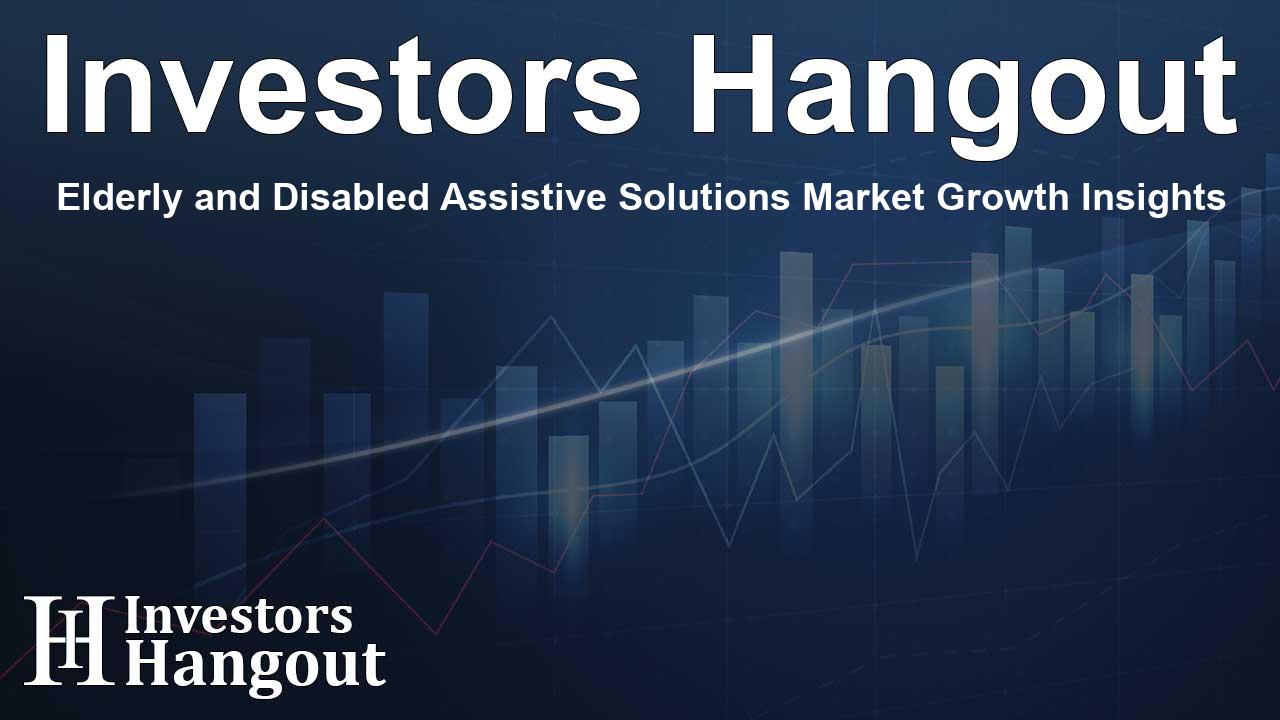Elderly and Disabled Assistive Solutions Market Growth Insights

Insights on the Elderly and Disabled Assistive Solutions Market
The global elderly and disabled assistive solutions market is on the brink of remarkable transformation. With projections indicating a growth of USD 15.60 billion from 2024 to 2028, the market anticipates a compound annual growth rate (CAGR) of 8.09%. This growth reflects a combination of innovative technological advancements and supportive initiatives from governments and NGOs, making it a vital area of focus for both consumers and corporations.
Market Trends and Drivers
Recent technological developments, particularly those leveraging artificial intelligence, are reshaping the landscape of assistive solutions. The market is increasingly gravitating towards customization, aiming to meet individual needs effectively. Vendors are enhancing their delivery processes, enabling faster access to personalized assistive devices. Industry leaders like Permobil AB and Sunrise Medical are designing customizable templates tailored for consumers' unique requirements, which is a testament to the industry's trend of prioritizing user preferences.
Growing Awareness and Participation
The surge in awareness regarding mobility rights and the participation of individuals with disabilities in events like the Paralympics have significantly influenced the demand for assistive solutions. This rising sentiment fuels the development of specialized products that facilitate inclusion and accessibility, such as swimming pool lifts and customized wheelchairs. The positive societal shift towards empowering physically disabled individuals is expected to catalyze further market growth.
Major Contributors to Market Expansion
The elderly and disabled assistive solutions market is experiencing significant growth due to an escalating number of mobility impairments resulting from non-communicable diseases such as Multiple Sclerosis and Stroke, along with injuries from accidents. This trend has led to increased demand for mobility aids including wheelchairs, canes, and scooters, which enhance the quality of life for users. Companies are embracing innovative healthcare solutions, such as patient lifts and rehabilitative devices, to meet these surging demands.
Innovations in Assistive Technology
Innovative assistive technologies are gaining traction, impacting various aspects of daily living for the elderly and disabled. For instance, AI-powered mobility devices and cognitive aids are enhancing independence for users. Furthermore, advancements in healthcare technologies facilitate improved user experience and accessibility. As leg prosthetics and other specialized aids become more sophisticated, a higher quality of life is achievable for those affected.
Challenges Facing the Industry
Despite promising growth, challenges exist that could inhibit market expansion. A significant portion of the assistive solutions market is dominated by companies based in Western regions, majorly the US and Europe. Consequently, high import duties in emerging markets can deter institutional buyers from acquiring necessary products, making the import process expensive. For instance, high costs associated with importing aids may restrict healthcare facilities in developing regions from obtaining essential equipment.
Competition and Market Structure
The current market structure is notably fragmented, with many manufacturers competing to gain market share. Emerging economies face stiff competition from low-cost manufacturers, especially from countries like China and India, where production capabilities often come at a lower expense. Moreover, logistical hurdles associated with the supply of components further complicate expansion in these regions.
Segmentation Overview
The elderly and disabled assistive products market can be categorized into several segments, including:
- Product Type
- Hearing Devices
- Mobility and Ambulatory Devices
- Healthcare Furniture
- Vision and Reading Aids
- End-user
- Hospitals
- Home Care Settings
- Nursing Homes
- Assisted Living Facilities
- Geography
- North America
- Europe
- Asia
- Rest of World (ROW)
Frequently Asked Questions
What is driving the growth of the elderly and disabled assistive solutions market?
The growth is primarily driven by technological advancements, increased demand for customized solutions, and supportive government initiatives.
What are some examples of assistive devices in the market?
Assistive devices include mobility aids like wheelchairs and scooters, as well as hearing aids and visual aids.
How does AI influence the assistive solutions sector?
AI enhances product functionality and customization, allowing for more tailored experiences and improved user independence.
What challenges does the market face?
Challenges include high import duties in emerging markets and strong competition from low-cost manufacturers.
Who are some key players in the market?
Prominent companies include Blue Chip Medical Products Inc., Cochlear Ltd., and Siemens AG among others, providing a range of assistive technologies.
About Investors Hangout
Investors Hangout is a leading online stock forum for financial discussion and learning, offering a wide range of free tools and resources. It draws in traders of all levels, who exchange market knowledge, investigate trading tactics, and keep an eye on industry developments in real time. Featuring financial articles, stock message boards, quotes, charts, company profiles, and live news updates. Through cooperative learning and a wealth of informational resources, it helps users from novices creating their first portfolios to experts honing their techniques. Join Investors Hangout today: https://investorshangout.com/
Disclaimer: The content of this article is solely for general informational purposes only; it does not represent legal, financial, or investment advice. Investors Hangout does not offer financial advice; the author is not a licensed financial advisor. Consult a qualified advisor before making any financial or investment decisions based on this article. The author's interpretation of publicly available data shapes the opinions presented here; as a result, they should not be taken as advice to purchase, sell, or hold any securities mentioned or any other investments. The author does not guarantee the accuracy, completeness, or timeliness of any material, providing it "as is." Information and market conditions may change; past performance is not indicative of future outcomes. If any of the material offered here is inaccurate, please contact us for corrections.